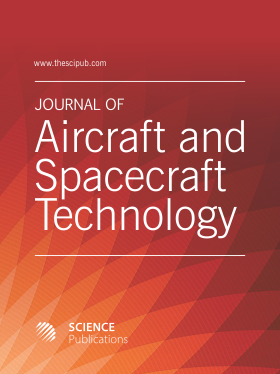About Bell Helicopter FCX-001 Concept Aircraft-A Short Review
- 1 Bucharest Polytechnic University, Romania
- 2 Second University of Naples, Italy
- 3 American University of Ras Al Khaimah, United Arab Emirates
Abstract
Bell Helicopter is always preparing beautiful surprises for us, so this year has not been outdone and has revealed its vision of its future aircraft model FCX-001, a true vertical elevator, ment to can climb to high altitudes in a record time, with an enviable dynamics and maneuverability. The first appearance of the new model FCX-001 took place at Heli Expo 2017 in Dallas, Texas, where the new concept of the aircraft was presented in this highly stylized form. The aircraft appeared in the Bell stand, both in the form of a large-scale layout and in the virtual reality by using immersive helmets, the two-engine ship incorporating some of the new technologies currently under development at Bell and it is very likely to mature in the near future. At first glance, you are astonished at a cockpit that is totally devoid of physical controls, as if the ship were to run alone, fully automated. Notable elements in the design of the FCX-001 include a fan-driven anti-torque system, hybrid propulsion system, main rotor blade tips, extensive use of fuselage glass, winged doors and the use of augmented reality in the cockpit to control the aircraft. On the very roomy cabin ceiling of the aircraft, configured for only eight passengers in the Heli-Expo model, but able to adapt up to 12 passengers, Bell introduced a "drop-down" control module to allow personalization maximum and increased passenger comfort. The concept is provided with various modules that provide passengers with the ability to adjust their own things, such as cabin light intensity, interior temperature, or infotainment system. When looking closely at the new FCX-001 concept, starting with the back of the aircraft, it does not have a tail rotor (which is essential and notable for Bell's new model). In order to achieve the anti-torque instead, a new multi-rotor system is needed in the hood. It gives the aircraft the ability to push in both directions and also has vector control of the traction, also allowing it to give up a horizontal stabilizer. The anti-torque system is acted by an electric motor as part of a hybridized propulsion system. At the top of the aircraft, the main rotor blades (morphing) have an attractive design. At the same time, technology aims to allow the tip of each blade to move between the different flight regimes, just like a "swing wing" on an airplane to maximize efficiency and performance and reduce noise. The actual airframe of the aircraft is also very different from what Bell used in the past. In terms of ladder, the FCX-001 is slightly larger than a Bell 412 both in terms of its length and width, its new lines and its use of massive glass exhibiting some production challenges that rely on the new composite structures, today so widely used in the aviation and aerospace industries.
DOI: https://doi.org/10.3844/jastsp.2017.91.96

- 11,596 Views
- 5,552 Downloads
- 12 Citations
Download
Keywords
- Bell Helicopter
- New Aircraft Concept
- Vertical Elevator
- High Altitudes
- Modern Ship
- Dynamics
- Heli Expo
- Dallas Texas
